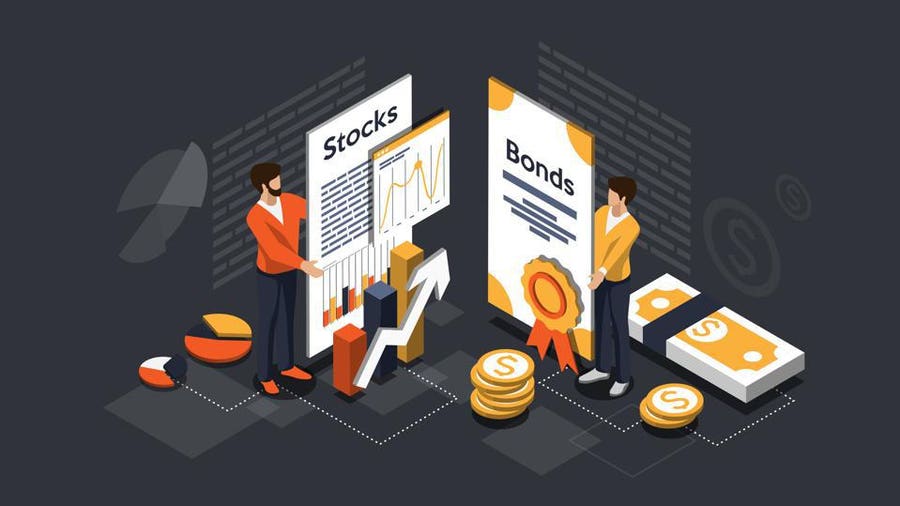Investing in assets is one of the most effective ways to actively or passively build and preserve wealth over time. But what exactly are “assets”?
These are resources or items of value that individuals or businesses own, such as property, stocks, or collectibles, holding their value even after decades.
When chosen wisely, they have the potential to grow in value, helping to combat the effects of inflation—the gradual increase in prices that reduces the purchasing power of money.
Simply put, by investing in appreciating assets, you ensure your wealth grows faster than inflation eats it away.
There are so many examples of assets, and here we’ll analyze a few, together with their potential:
Understanding Different Asset Classes

Before making any decisions, it’s always good to research and explore the available assets and their value. That way, you can easily spot the opportunities that match your preferences. What assets are most valuable? Is it worth investing in paintings, luxury fashion accessories, metal items, or jewelry? Let’s take a look:
Real Estate
Real estate is a classic asset class that can provide steady returns. By owning a property, you can rely on it for selling or renting, as well as having a home during times of financial crisis:
- Types: Residential properties (like homes or apartments), commercial properties (such as office spaces), and undeveloped land.
- Pros: Potential for consistent cash flow through rentals, tax advantages, and long-term appreciation.
- Cons: Requires significant upfront investment and ongoing maintenance.
- Strategies: You could adopt a buy-and-hold strategy, rent out properties for passive income, or invest in Real Estate Investment Trusts (REITs), which let you own shares in real estate ventures without managing properties yourself.
No matter what kind of property you own, it keeps its value over time, making it a great asset that guarantees financial security.
Stocks
Stocks represent ownership in companies and are a cornerstone of wealth-building. They are pretty popular these days, but you must plan your investment strategically.
- How They Work: By owning stock, you earn a portion of the company’s profits, either through price appreciation or dividends.
- Stock Indices: Metrics like the S&P 500 or NASDAQ show the overall health of the market.
- Strategies: Choose value investing (finding undervalued stocks), growth investing (betting on future market leaders), or dividend investing (focusing on stocks that pay consistent dividends).
Stock investments require dedication and knowledge. Plan your investments, because it’s easy to lose if you don’t have a proper strategy.
Bonds

Bonds are debt securities issued by governments or corporations that pay periodic interest.
- Types: Government bonds (safe but lower returns), corporate bonds (higher returns but riskier), and municipal bonds (often tax-advantaged).
- Role: They provide stability in a portfolio, especially during market volatility.
- Key Considerations: Check bond ratings (AAA is the safest) to gauge risk and return.
Understanding bonds can be a rewarding skill, especially if you have a gut on avoiding the volatile periods.
Precious Metals
Metals are probably the most popular asset people aim for. It holds almost a lifelong value, with a huge chance to be profitable for the generations that come. Gold, silver, and platinum have been valuable for centuries, particularly as a hedge against inflation. People invest in jewelry, artistic pieces, or other forms of precious metal assets.
- Physical vs. Paper Metals: While physical metals like gold bars are tangible, ETFs and mutual funds offer easier, more liquid investment options.
- Pros: High-value retention during economic downturns.
- Cons: Limited cash flow and storage concerns for physical metals.
Still, many people trust the precious metals most, maintaining their reputation as a safe asset.
Collectibles
Alternative investments like art, wine, or rare coins can diversify your portfolio. Here you can consider handcrafted decor elements. One of the most popular collectibles are Hermes bags like Birkin and Kelly, as well as watches, jewelry, and paintings.
- Value Drivers: Rarity, historical significance, and market trends.
- Risks: Their value can be unpredictable, and they often require expert knowledge.
- Rewards: High returns if the items appreciate over time or become trendy.
Choose the collectibles that hold the most value, while maintaining a diverse portfolio.
Building a Diversified Investment Portfolio

“Diversification” means not putting all your eggs in one basket. Smart investors choose various assets and split their wealth into different “baskets.” That way, they’re sure if one asset goes down, the rest of the other assets are safe and secure.
- Why It’s Important: It reduces risk by spreading your investments across asset classes.
- How to Allocate Assets: Consider your age, income, and risk tolerance when deciding proportions. Younger investors may lean towards growth-focused assets (like stocks), while older investors might prioritize stability (like bonds).
- Rebalancing: Periodically adjust your portfolio to maintain your desired allocation.
- Risk Tolerance: Always align your investments with your goals, whether saving for retirement, buying a house, or achieving financial independence.
By diversifying your investment portfolio you’re gaining experience in various assets, which helps you make better decisions regarding the expected profit.
Practical Tips for Successful Investing
Are there any practical tips to consider? Here are some of the best ones we collected for you:
- Start early, as time allows you to gain experience and expertise in specific assets while keeping up with the trends
- Invest consistently, because regular contributions, even small ones, add up over time
- Educate yourself, because you need to understand what you’re investing in and why
- Seek professional advice, i.e., consult a financial advisor if you’re unsure about some activities
- Stay disciplined and avoid impulsive decisions driven by market volatility
- Monitor regularly and check your portfolio to ensure it aligns with your goals
Surely, be smart, and don’t let the trends exhaust your pocket.
Conclusion

Investing in assets that hold and grow in value is a proven way to build long-term wealth. By understanding different asset classes, diversifying your portfolio, and maintaining good investment habits, you can safeguard your financial future against inflation and market uncertainties. The best time to start your investment journey is now — your future self will thank you!







